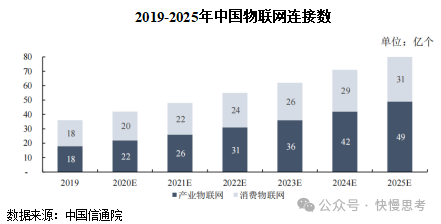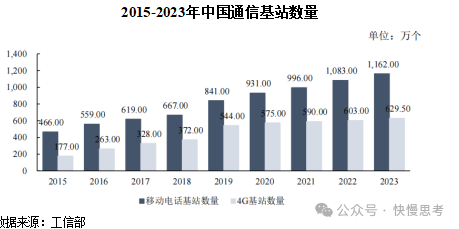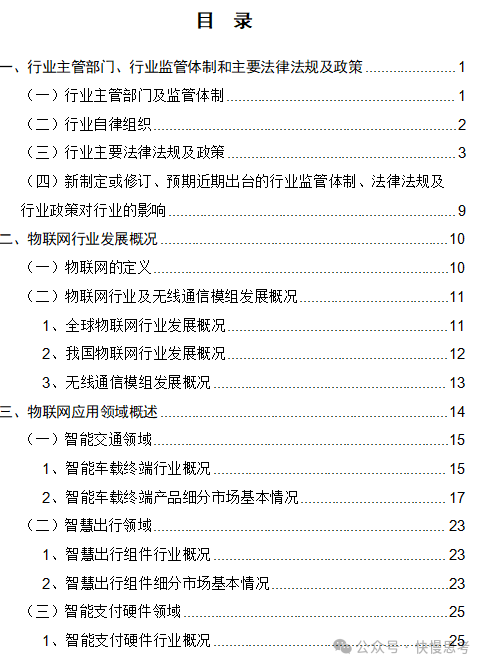Click the blue text to follow us
(1) Definition of the Internet of Things (IoT)
The Internet of Things (IoT) is a system of interconnected computing devices, mechanical devices, and digital machines that can identify, locate, track, monitor, and manage objects in real-time and automatically through various sensing devices, according to agreed protocols and unique identifiers (UIDs), relying on the internet for data transmission. The IoT is an extension of the internet, and its architecture can be divided into four layers: the perception layer, network layer, platform layer, and application layer, as detailed below:

The perception layer achieves intelligent sensing, information collection, processing, and automatic control of the physical world, connecting to the network layer through communication modules. The network layer transmits the information collected by the perception layer to the platform layer using different communication protocols. The platform layer serves as the data aggregation and processing center, playing a crucial role in the IoT system, mainly including device management platforms, access management platforms, application development platforms, and business analysis platforms.
The application layer can be divided into consumer IoT applications and industrial IoT applications. Consumer IoT focuses on the demand side, primarily connecting through mobile networks or other means, operating on platforms such as smartphones or other mobile devices, aiming to enhance consumer experience. Industrial IoT, on the other hand, targets the supply side, effectively integrating and interconnecting core elements such as enterprise information, data, and network systems to achieve flexible allocation and efficient utilization of enterprise resources, optimizing core processes such as R&D, production, and sales, and realizing the goal of smart manufacturing. Currently, IoT applications have gradually diversified into various fields, including smart transportation, intelligent travel, mobile payments, smart homes, smart retail, smart logistics, smart industry, smart agriculture, and public services.
Wireless communication modules are modular components that integrate baseband chips, RF chips, storage chips, etc., on a PCB and provide standard interfaces. They are key components connecting the IoT perception layer and network layer. Various IoT devices achieve communication, positioning, and other functions through wireless communication modules, enabling interconnectivity between “people and things” and “things and things,” as well as device intelligence.
(2) Overview of the IoT Industry and Wireless Communication Module Development
1. Global IoT Industry Development Overview
With the advancement of communication and positioning technologies and the arrival of the industrial automation era, the IoT industry chain is becoming more complete and mature. Driven by infrastructure construction, transformation of fundamental industries, and consumption upgrades, the global IoT industry is experiencing explosive growth.
According to GSMA data, despite the impact of global macroeconomic fluctuations, the global IoT market size reached $381 billion in 2020, a year-on-year increase of 11.08%, and it is expected to grow to $906 billion by 2025, with a compound annual growth rate (CAGR) of 18.92% from 2020 to 2025. Against the backdrop of the rapid popularization of consumer IoT, the number of global IoT device connections grew rapidly from 6.3 billion in 2016 to 15.1 billion in 2021, with an average annual compound growth rate of 19.10%. It is expected that the total number of global IoT device connections will reach 23.3 billion by 2025, with a CAGR of 11.45% from 2021 to 2025.

2. Overview of the IoT Industry Development in China
With national policy support and rapid improvement of industrial infrastructure, China’s IoT industry has maintained high-speed growth. According to data from the China Internet Association, as of 2020, the scale of China’s IoT industry exceeded 1.7 trillion yuan, and it is expected to surpass 2 trillion yuan by 2022. According to data from the China Academy of Information and Communications Technology, in 2019, the total number of IoT connections in China was evenly split between consumer IoT and industrial IoT, each accounting for 50.00%. It is expected that by 2025, the growth in IoT connections in China will mainly come from industrial IoT, which will account for 61.25% of total IoT connections.

With the continuous improvement of network infrastructure in China, the deployment of cellular IoT networks such as 5G, 4G Cat.1, and NB-IoT is being steadily advanced, ensuring the steady development of China’s IoT industry. According to data from the Ministry of Industry and Information Technology, as of the end of 2023, the total number of mobile communication base stations in the country reached 11.62 million, with a net increase of 790,000 throughout the year. Among them, 4G base stations reached 6.295 million, and 5G base stations reached 3.377 million, accounting for 29.1% of the total mobile base stations, an increase of 7.8 percentage points compared to the end of the previous year.

3. Overview of Wireless Communication Module Development
Wireless communication modules are core components for smart terminals to access the IoT and achieve positioning. Typically, for each additional IoT connection, 1-2 wireless communication modules are added. According to GSMA data, the global number of IoT connections reached 15.1 billion in 2021, and it is expected to reach 23.3 billion by 2025, with an average annual compound growth rate of 11.45%. According to the “2023 IoT Financial Development White Paper” published by Ping An Bank, IDC, and the China Academy of Information and Communications Technology, as of the end of 2021, China’s IoT IP connections reached 5.742 billion, and it is expected that by 2025, the total number of IoT IP connections in China will reach approximately 10.3 billion. The development of the IoT industry will significantly drive the demand for wireless communication modules.
According to data from Toubao Research, the market size of wireless communication modules in China increased from 129.09 billion yuan in 2015 to 147.5 billion yuan in 2019, with a compound growth rate of 3.39%. With the acceleration of 5G commercialization and the continuous improvement of wireless communication infrastructure, it is expected that by 2024, the market size of wireless communication modules in China will reach 344.44 billion yuan, with a projected compound growth rate of 7.76% from 2020 to 2024.
The original WORD version of the “In-Depth Analysis Report on the IoT Industry: Policies, Development Status, Trends, and Competitive Landscape” can be accessed by clicking “Read the original text” or by following our public account and replying “IoT” to get it for free.


